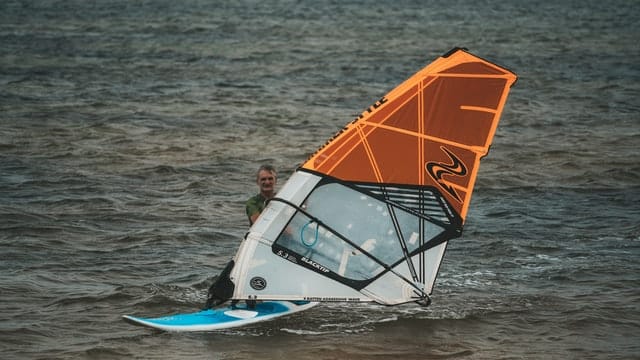Windsurfing is a fantastic sort to be able to do well; much like surfing or sailing, it is a wonderful skill to have while on holiday somewhere sunny or on a trip to the coast. That said, windsurfing can be quite difficult to master, so having an instructor to help you start out is crucial to improving when you first begin to learn. Finding a local club or class, such as a weekly lesson, can go a long way to help you learn to windsurf when you are first starting out. If you are interested in getting to the level of windsurfing ability you need in order to do so independently, it requires steady work with someone who is more experienced than you to get going. As with most sports, when it comes to windsurfing practice is key to being able to become a solid windsurfer with the basics of the sport understood.
While most believe that wind surfing is a sport that primarily focussed on surfing – as the name of the sport suggests – it is in fact a form of sailing, albeit with a small board rather than a boat. The light weight of the board in comparison to the sails allows those that catch the wind to travel very fast. Standing on a board similar to that of a surfing board, windsurfers use the sail and move their feet and bodyweight to steer.
Common Terms
When you first start windsurfing it is important that your first lesson is on how to treat the equipment and how each piece fits together and works. Knowing how all the parts of your windsurfing kit work can make learning how to windsurf much easier, as you know what each piece of kit is there for and how it should be used. When windsurfing as a beginner there is a bit of lingo you should eventually learn – here are a few of the most common terms that you will end up using when discussing windsurfing.
Equipment
- Board – This is the main part of your equipment, a large board similar to a surfing board that you balance on top of when you are windsurfing.
- Sail – Most sails for windsurfing are clear so they can be seen through to spot potential obstacles. Sails for beginners are smaller so they are easier to control even if they can’t get to the same high speeds as larger sails.
- Mast – The central pole that the sail is attached to that fits to the board. It forms the backbone of your rig.
- Mast base – The mast base keeps the sail attached to the board while ensuring it stays flexible.
- Boom – The boom is a railing in the shape of an oval which is used by the windsurf rider to position the sail, balance and steer during windsurfing outings.
Terms
- Rig – The combination of sail, mast and mast base that you use to steer and catch the wind while windsurfing.
- Blasting – Sailing very fast across the water having caught the wind just right to go very quickly.
- Centre of effort – The place in the centre of the sail where most of your power comes from and propels you forwards.
- Deck – The top surface of the board which you stand on. This is the part of the board that you balance on; some of them can be quite broad, especially on beginners’ boards.
Stay Safe
When you are first starting to learn how to windsurf it is important that you have a dedicated instructor, and having a group of windsurfers going out on the water together is a great way to get tips on improving as well as providing safety in numbers. Any water sport you attempt can potentially be dangerous, and having experienced swimmers nearby is always a good safety practice when you are heading out on the water, whether you are sailing or paddleboarding.
Even if you are already a proficient windsurfer it is important to head out on the water on days where there will be plenty of people around to help out if you get in to trouble on the water.
Here is a few tip to ensure you stay safe when windsurfing.
- Stay alert – whether you are windsurfing on the sea or on another body of water you are not likely to be the only person there, unless you come very early in the morning. Along with other windsurfers, there may be people sailing, paddleboarding or swimming in the water. If you don’t keep an eye out you might end up colliding, which can cause injuries.
- Bring a buddy – Being out on deep water by yourself is dangerous. It is important to have another person there keeping track of you, even if it is only so that they can call for help if you get injured in any way.
- Watch your speed – When windsurfing you can end up going very fast, but remember the faster you go the harder it is to react to what is going on around you so it increases the chance of collisions.
- Wear a life jacket – A lifejacket can be uncomfortably bulky and make it hard to change your posture, but if you lose your board or the weather gets rough your life jacket can keep you safe.
- Stay warm – cold can make you very uncomfortable while windsurfing, so ensuring you have a wetsuit on when you head out is essential.
Find a Group
If windsurfing is something that you want to do regularly then finding a nearby group that practise together is one of the best ways to do so. Windsurfing is quite difficult to pick up unless you have an instructor, and even once you are a proficient windsurfer, in order to improve it is imperative that you have someone more experienced to give you advice on how to carry out different tricks and moves.
Many beaches (and Bewl reservoir) offer windsurfing memberships for those who visit frequently. If you are planning on booking a membership and coming to Bewl Water to windsurf or sail, then please contact us here. Our team will be delighted to see you enjoy windsurfing on the Bewl reservoir.

